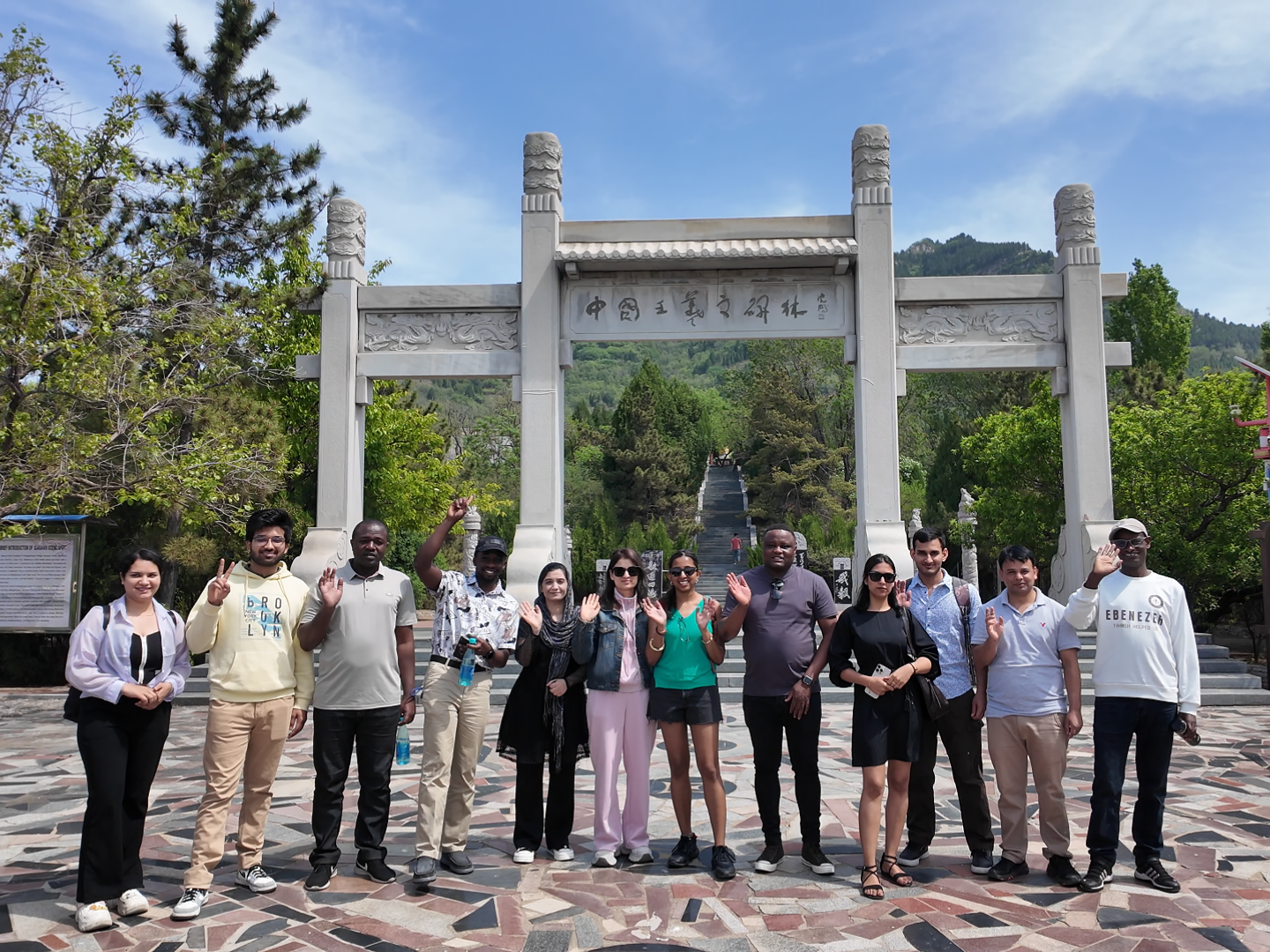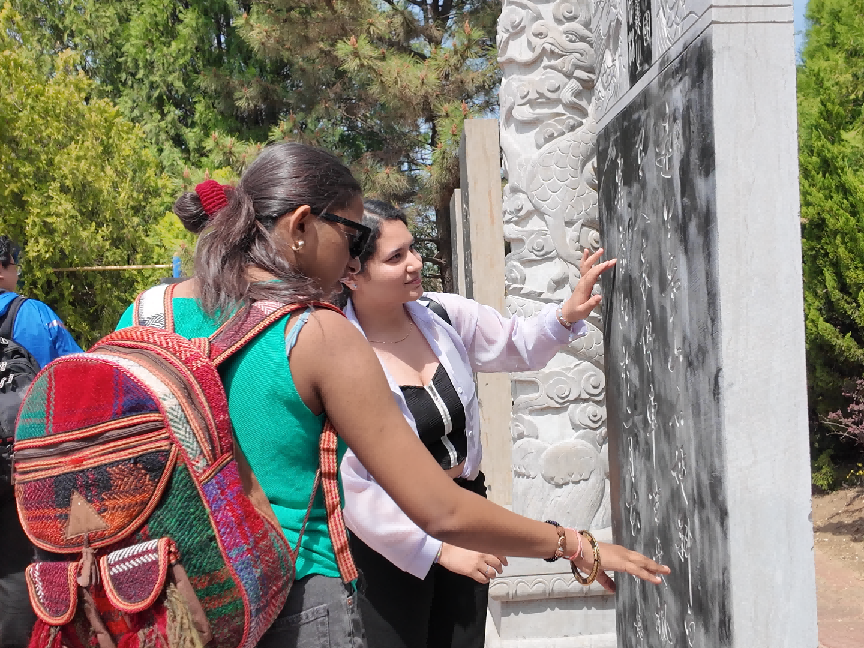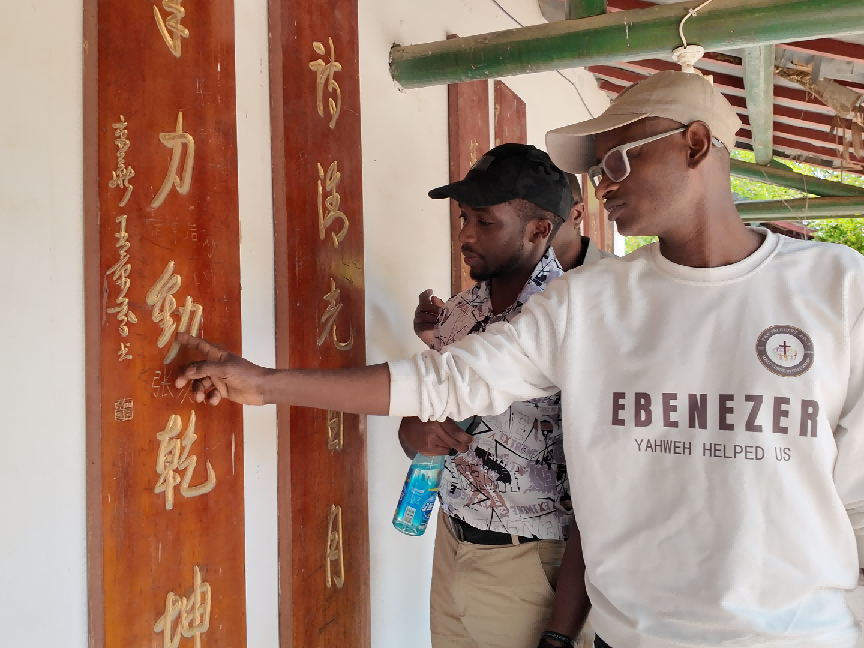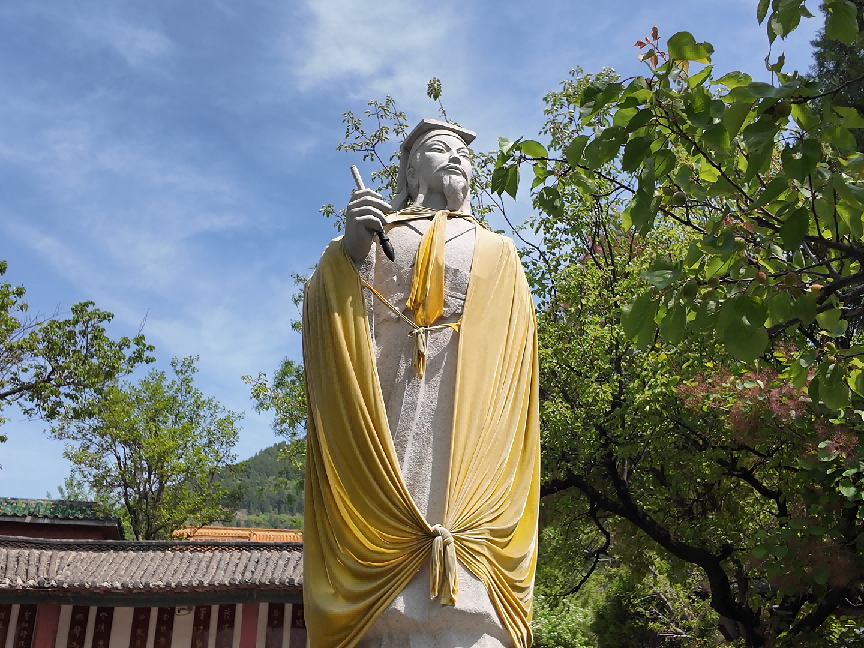 2025-05-20
2025-05-20
Recently, Bijiashan in Laiwu District, Jinan, Shandong, became the stage for a cross-cultural dialogue as 12 international guests from Pakistan, Syria, Uganda, Nepal, Tanzania, Namibia, Ethiopia, and India took part in the “Opportunity China · Vibrant Laiwu” themed cultural walk. Following the legacy of the “Sage of Calligraphy,” Wang Xizhi, the group explored the cultural veins of calligraphy set against the scenic and cultural backdrop of Bijiashan—where nature becomes the canvas, and culture, the ink—offering a unique glimpse into the essence of Qilu culture.

Name and Origins: Three Peaks Cradling a Legacy of Elegance
“In the Yonghe period of the Eastern Jin Dynasty, Wang Xizhi, accompanied by fellow literati, passed through Pangjiazhuang Village in Niuquan Town, Laiwu. Upon seeing the three peaks rising side by side like a brush rest, he inscribed the characters ‘Bijiashan’ (Brush Rest Mountain), giving the mountain its name that has endured through the ages,” the guide explained at the scenic entrance, quoting from the Laiwu County Annals. At an elevation of 540 meters, the three peaks of Bijiashan resemble a brush laid on an inkstone. The famed “Brush Rest Reaching the Clouds” was once counted among the eight scenic wonders of Laiwu. As the group paused to take in the view, many international students remarked, “Standing at the foot of Bijiashan feels like a spiritual cleanse. The air is so fresh—it makes you want to take deep breaths.”

Stone Inscriptions: 300 Engravings Preserve a Cultural DNA
At the Wang Xizhi Stele Forest, visitors were greeted by a 3.5-meter-tall granite statue of the calligraphy sage. Captured mid-thought, brush in hand and robes flowing, the statue evokes Wang Xizhi’s refined elegance—“graceful like floating clouds, vigorous like a startled dragon.” Over 300 stone steles cascade along the mountain slope, including inscriptions of Preface to the Orchid Pavilion and modern calligraphic pieces such as the “Ode to Bijiashan.” A 400-meter-long corridor houses 600 engraved wooden plaques by esteemed provincial and national calligraphers, their deep red wood and carved eaves harmonizing in classical splendor.

A Global Perspective: Cultural Exchange Writes a New Chapter
“Walking through Bijiashan feels like a conversation with the past—I can sense the cultural stories carried by this mountain,” said Aman from India at the end of the tour. Gazing at the calligraphy carved into stone, he added, “Even though I can only recognize a few Chinese characters, the shapes and brushstrokes are incredibly impressive.”
In recent years, Bijiashan has promoted a model that integrates “calligraphy culture + ecological tourism,” hosting hawthorn picking festivals and intangible cultural heritage workshops, drawing over 100,000 visitors annually. This cultural walk offered international guests a firsthand experience of traditional Chinese culture, while also showcasing Laiwu’s innovative approach to using culture to enrich tourism and tourism to amplify culture.
